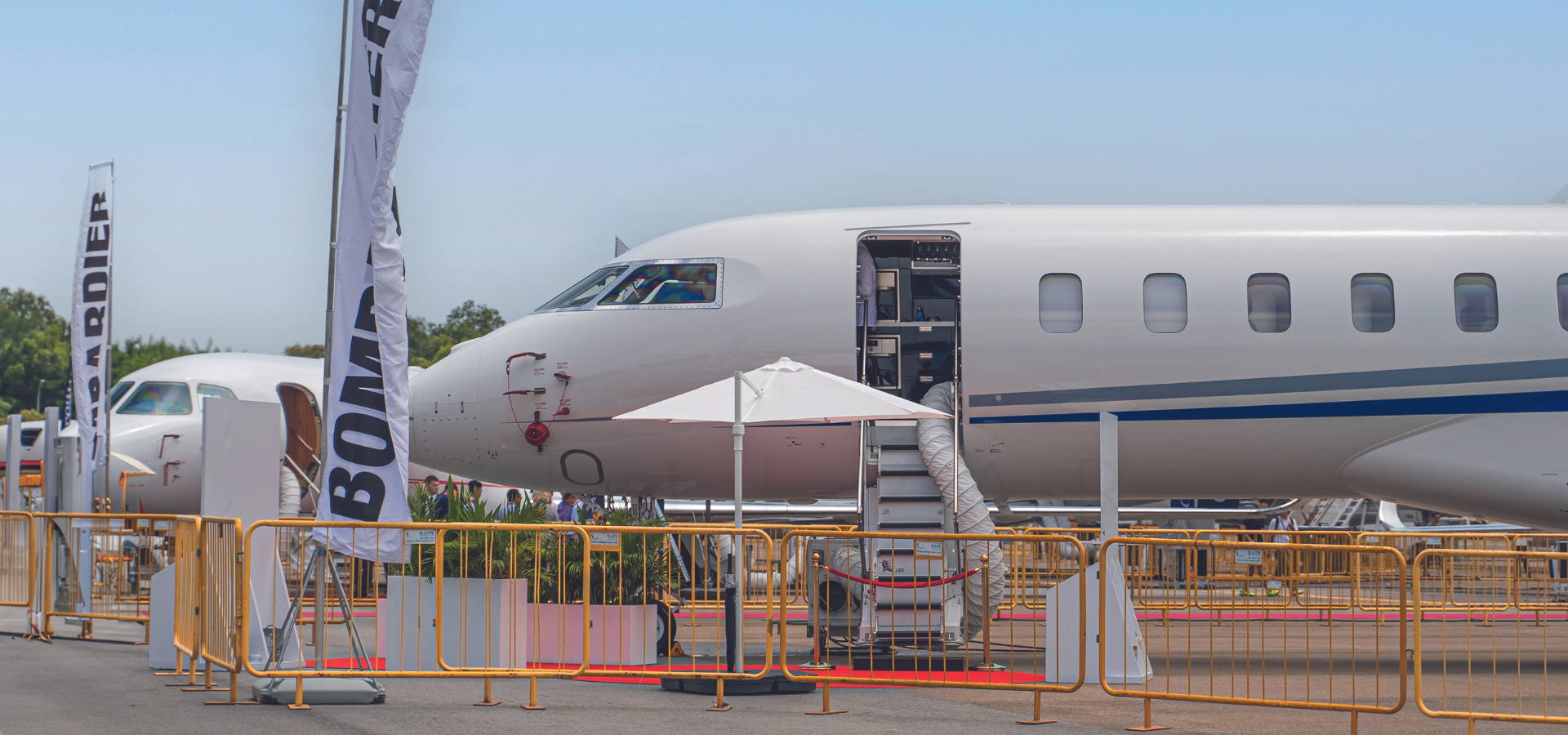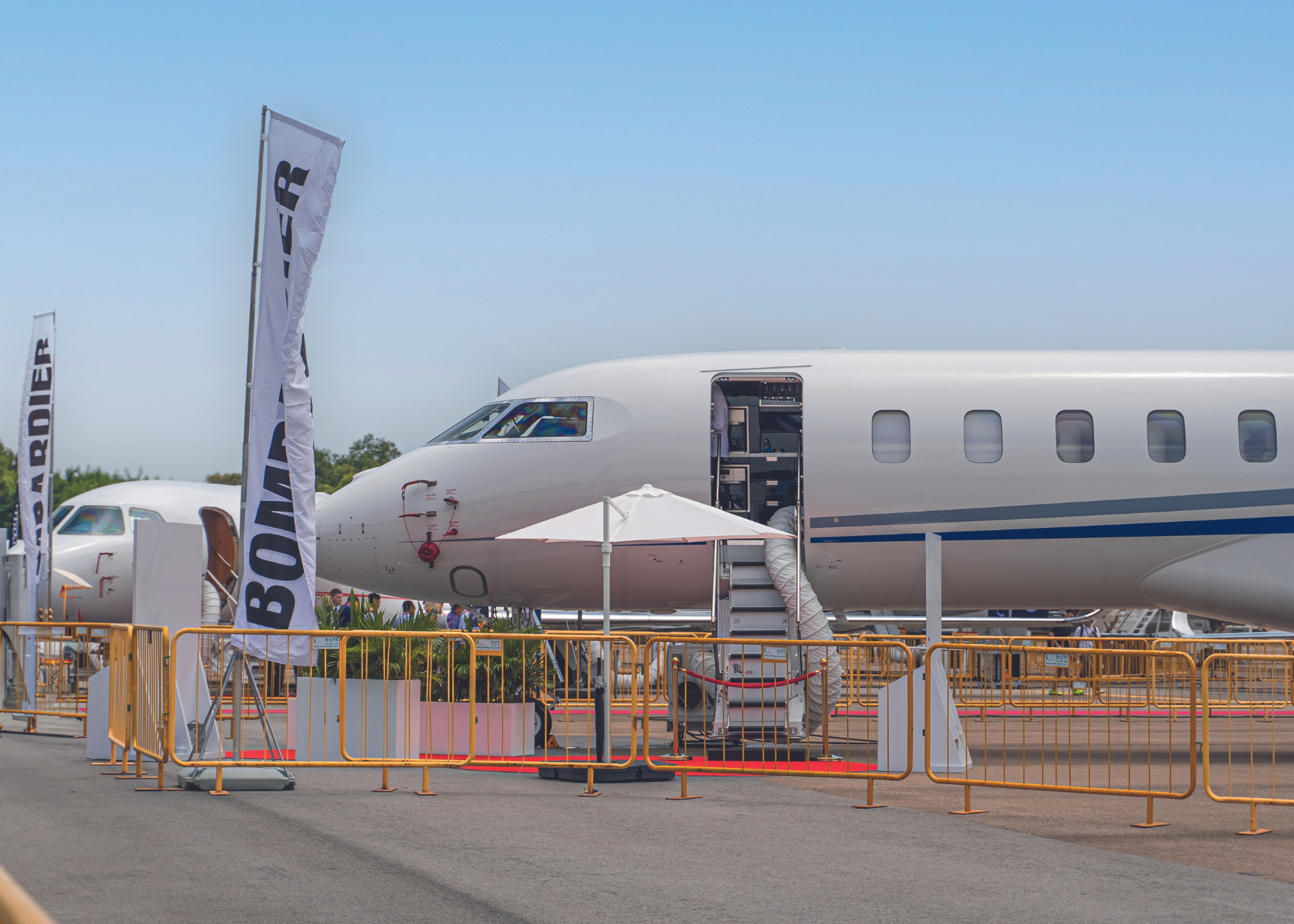The interview: JetBay’s Vivian Zhang on how AI is changing the way we book charter flights
by Karishma Tulsidas
Launched at the height of the pandemic, JetBay set out to solve the longstanding inefficiencies in private aviation—from limited aircraft availability to the dreaded “empty leg.” What began in China five years ago has since expanded globally, with offices in Singapore, Hong Kong, Dubai and London.
At the heart of its model is a deep integration of AI and data analytics—tech that streamlines the process of sourcing, booking, and confirming charter flights. We caught up with co-founder Vivian Zhang to learn more about how JetBay is changing the private jet game.
Boulevard: What’s a pain point that JetBay wanted to address in the air charter space when it first started?
Vivian Zhang: Time. In the past, when I worked for an operator, we only had three aircraft. So, we were limited—we could only sell [charters on] those three jets. That meant if we got a request from North America, South Africa, or Europe, we often couldn’t meet it. To really serve a global market, you need global data. Over the last five years, we’ve built a database of over 10,000 aircraft from around the world. That took a lot of time and effort—contacting operators, checking aircraft details, service quality, speed of feedback, and reliability. We don’t just rely on the three or thirty aircraft we own—we rely on data, which is more powerful.
“To really serve a global market, you need global data. Over the last five years, we’ve built a database of over 10,000 aircraft from around the world.”
Blvd: You mentioned that technology is one of your key differentiators. Can you tell us more about that?
Zhang: Yes, technology plays a huge role in our business. We’ve developed our own proprietary system. These tools allow us to efficiently serve a large number of clients at once—unlike the traditional model, which often focuses on one-to-one interactions. Our technology lets us scale and serve faster and more efficiently. It’s one of our biggest advantages.
Blvd: So, would you say your platform is different from traditional brokers?
Zhang: Very much so. Traditional brokers operate on information gaps. A client might want to fly from Shanghai to Singapore, and the broker might only know three operators and offer those, adding a markup of 5-10%. That’s how deals are done. But we don’t believe information gaps are a long-term advantage. As more clients come to us and as technology evolves, those gaps disappear. Instead, our model focuses on scale.
For example, if one client flies from Shanghai to Hong Kong and another from Hong Kong to Singapore, a traditional broker would need two aircraft. But because we operate at scale, we can combine these trips into one aircraft, improving efficiency and pricing. That’s not possible without a large volume of inquiries and technology to optimise the routes.
“Our technology lets us scale and serve faster and more efficiently. It’s one of our biggest advantages.”
Blvd: So your main differentiators are the technology, the data, and the scale. Is that correct?
Zhang: Exactly. Those are our biggest strengths. In addition, we have a dedicated customer service team that handles detailed questions like pricing, aircraft type, itinerary, catering, and more. Some people might have the budget but not an immediate need to fly, so we never miss out on those leads — our sales team works closely with them.
Blvd: Who are your main clients? Can you describe the demographics?
Zhang: Around 60% of our clients are businesspeople—large companies and C-suite executives from various industries. For example, clients from tech companies like or luxury hotels.
The remaining 40% are private individuals—often travelling for leisure, especially around Chinese holidays like Spring Festival. These trips might be to Bali, Tokyo, or ski resorts. We also see travel for specific purposes like golf, skiing, or even pet travel.
Blvd: You mentioned your sales team is a key strength. Can you elaborate?
Zhang: Yes, our team doesn’t just handle sales. Once a flight is confirmed, our customer service team manages the entire journey—from itinerary planning to catering and fine details. They may not need to be extremely ambitious, but they must be extremely patient and meticulous. We pride ourselves on high-quality service throughout.
“Our team doesn’t just handle sales. Once a flight is confirmed, our customer service team manages the entire journey—from itinerary planning to catering and fine details.”
Blvd: You started the company five years ago in China. Have you seen any changes in how people use charter jets since then?
Zhang: Definitely. In the past, many clients came from industries like property. But over the years, that demand has dropped off—some of those clients disappeared or stopped flying. In contrast, industries like tech have grown rapidly, and we now see more clients from those sectors.
Blvd: Are more ultra-high-net-worth individuals choosing to charter rather than own jets now?
Zhang: In China, yes. Around five years ago, China had around 500 private aircraft. Now, that number is under 300. That includes both privately owned and charter aircraft. So ownership is decreasing, but the charter market is growing. The problem is that we don’t have enough aircraft to meet demand in China—the infrastructure isn’t balanced. We have many long-range jets like Bombardier and Gulfstream, but very few light jets like the HondaJet. That makes the overall market less reasonable and less flexible.
Blvd: And what about the Southeast Asia region? How does that compare?
Zhang: In Southeast Asia, I believe the number of jet owners is actually increasing. A lot of wealthy Chinese have moved to Singapore, Malaysia, and Indonesia—and some are buying aircraft there. At the same time, charter requests in the region are also rising. I know of several operators from Australia and the Middle East who are looking to base aircraft in Southeast Asia because demand is growing so fast.
“Around five years ago, China had around 500 private aircraft. Now, that number is under 300. That includes both privately owned and charter aircraft. So ownership is decreasing, but the charter market is growing.”
Blvd: Why do you think demand is increasing in Southeast Asia?
Zhang: Economic development. Places like Jakarta are growing rapidly and attracting a lot of investment, especially from Chinese businesses. Vietnam and Cambodia are also seeing economic growth. So even as China’s aircraft ownership drops, demand in the surrounding region is rising.
Blvd: How would you compare Asia to Europe and North America in terms of private aviation?
Zhang: There’s still a big gap. In North America, there are over 20,000 private aircraft. Europe has more than 10,000. In contrast, China has fewer than 300. And most of those are based in just three cities: Beijing, Shanghai, and Shenzhen. So clients in other cities often need to pay extra for ferry flights.
In the US, aircraft are spread across the country—so if someone wants to fly from Los Angeles to New York, they only pay for that trip. In China, they might have to pay for two extra empty legs, which increases the cost significantly. That’s a major difference—the infrastructure and distribution of aircraft are much more developed in the US and Europe.
Read next:






